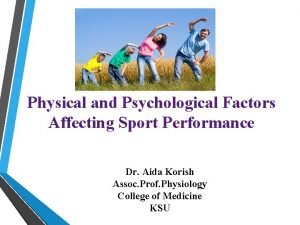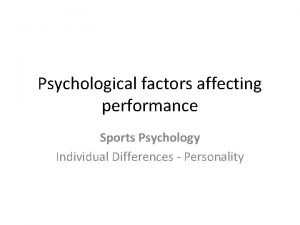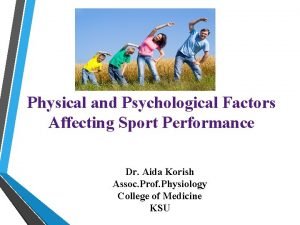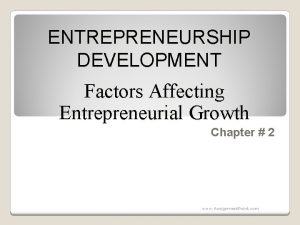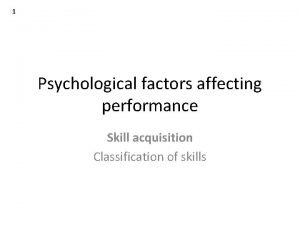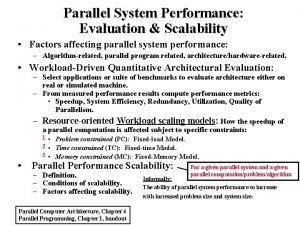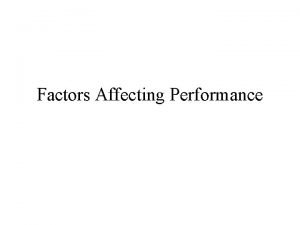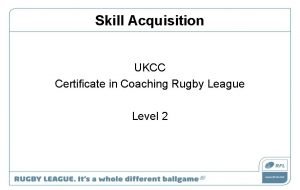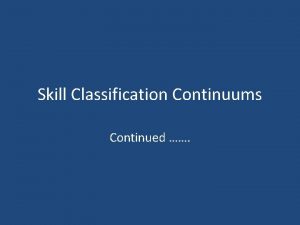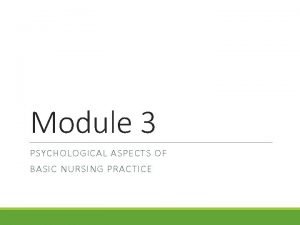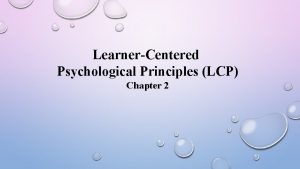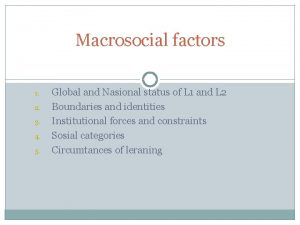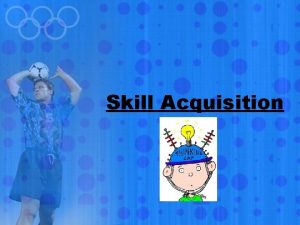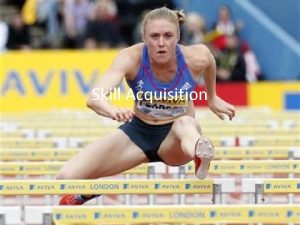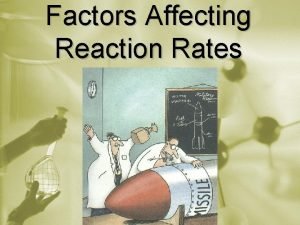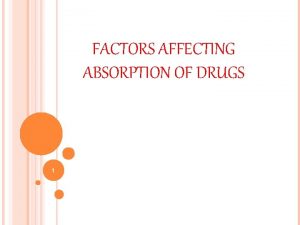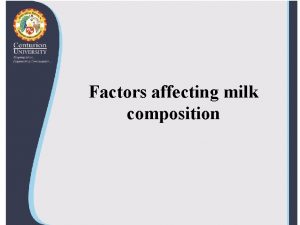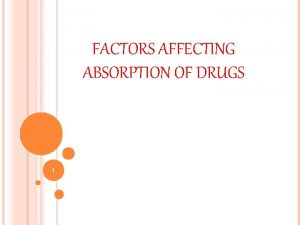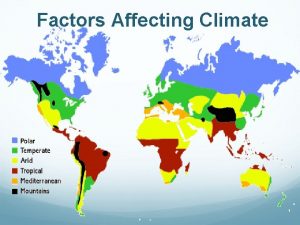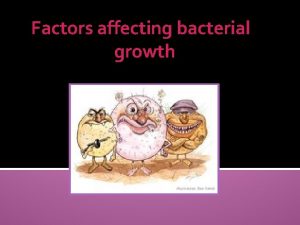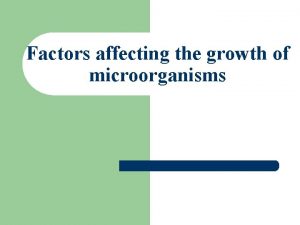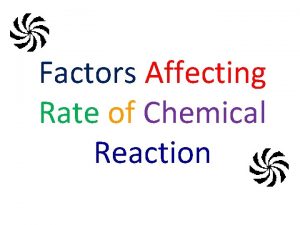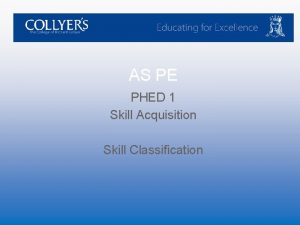1 Psychological factors affecting performance Skill acquisition Classification


















- Slides: 18

1 Psychological factors affecting performance Skill acquisition Classification of skills

Learning Objectives Learning Objective: Justify the placement of skills on continua Learning Outcomes: All: Describe the 6 continua Most: Give sporting examples of skills that lie across the different continua Some: Justify the placement of a variety of skills on each continua

Key Terms • • Continua / Continuum Difficulty continua Environmental continua Pacing continua Muscular involvement continua Continuity continua Organisation continua

Key Terms • Continua / Continuum - a continuous sequence in which adjacent elements are not perceptibly different from each other, but the extremes are quite distinct. • Difficulty continua – is concerned with how complex a skill is • Environmental continua - is concerned with the effects of the environment on skills • Pacing continua – is concerned with the timing of movements (often used with the open-closed continuum) - internal and external paced skills. • Muscular involvement continua – is concerned with the precision of movement - gross and fine skills. • Continuity continua – is concerned with how well defined the beginning and end of the skill are - discrete, serial and continuous skills. • Organisation continua – is concerned with how complicated a skill is and how easy you can break it down into smaller steps

Classification of Skills Skill classification systems are based on the view that motor skills are affected by three factors: • how precise a movement is • whether the movement has a definite beginning and end • whether the environment affects the performance of the skill

Difficulty continua Simple – complex • A simple skill is one that is straight forward, requires little concentration and cognitive ability. – E. g. a sprint start in swimming - there are relatively very few decisions that have to be made. • A complex skill involves a large attention span because they are complicated and are practiced in training repeatedly to make it easier to perform in competition. – E. g. a Slip catch in cricket, or a pass by a midfield player in hockey who has to make lots of decisions before she passes.

Difficulty continua Simple complex

Environmental influences continua Open – closed • Open skills: sports such as Netball, Football, and Hockey involve open skills. The environment is constantly changing and so movements have to be continually adapted. Skills are predominantly perceptual and externally paced, – for example a pass in football. • Closed skills. These skills take place in a stable, predictable environment and the performer knows exactly what to do and when. Skills are not affected by the environment and movements follow set patterns and have a clear beginning and end. The skills tend to be self-paced, – for example a free throw in Basketball, and serving in Squash or Tennis.

Environmental influences continua Open Closed

Pacing continua Self-paced – externally paced • Internally paced or self-paced skills: the performer controls the rate at which the skill is executed. These skills are usually closed skills. – i. e. javelin throw, discus. • Externally paced skills: the environment, which may include opponents, controls the rate of performing the skill. The performer must pay attention to external events in order to control his/her rate of movement. These skills involve reaction, and are usually open skills. – i. e. in ball games the performer must time his actions with the actions of other players and the ball.

Pacing continua Self-paced Externally paced

Muscular involvement continua Gross-fine • Gross skills: involve large muscle movements which are not very precise and include many fundamental movement patterns such as walking, running and jumping. – The shot putt is an example of a primarily gross skill. • Fine skills: involve intricate precise movements using small muscle groups and generally involve high levels of hand-eye coordination. – A snooker shot or playing the piano are examples of fine skills.

Muscular involvement continua Gross Fine

Continuity continua Discrete-serial-continuous • Discrete skills – the movement shows a clear start and end point – e. g. set shot in basketball • Serial skills – a series of discrete skills joined together one after each other – e. g. triple jump • Continuous skills – show movement with no clear start or stop point. The movements blend into each other – e. g. running, cycling

Continuity continua Discrete Serial Continuous

Organisation continua Low-high • A low organisation skill is very easy and uncomplicated like riding a bike. The phases that make up the skill are usually discrete and might be practiced separately to make your technique better. • A high organisation skill has a complex amount of phases involved which cannot be broken down and practiced separately as they are linked closely together. They require large amounts of attention.

Organisation continua Low High

Exam Questions May 2016 qu Identify a motor skill in sport and justify its 2 bi (3) classification on the simple-complex continuum.
 Factors that affect sports performance
Factors that affect sports performance Psychological factors affecting sports performance
Psychological factors affecting sports performance Physical factors affecting sports performance
Physical factors affecting sports performance Cultural factors affecting entrepreneurial growth
Cultural factors affecting entrepreneurial growth Psychological factors affecting medical condition
Psychological factors affecting medical condition Externally paced skill example
Externally paced skill example Factors affecting performance of parallel algorithm
Factors affecting performance of parallel algorithm Factors affecting performance
Factors affecting performance -54
-54 Skill acquisition certificate
Skill acquisition certificate Skill continuums
Skill continuums Hard skills for resume
Hard skills for resume Parental attitude meaning
Parental attitude meaning Psychological aspects of nursing
Psychological aspects of nursing Factors affecting learning in psychology
Factors affecting learning in psychology Factors of learner centered psychological principles
Factors of learner centered psychological principles Macro social factors
Macro social factors Performance based acquisition
Performance based acquisition Factors affecting climate
Factors affecting climate
